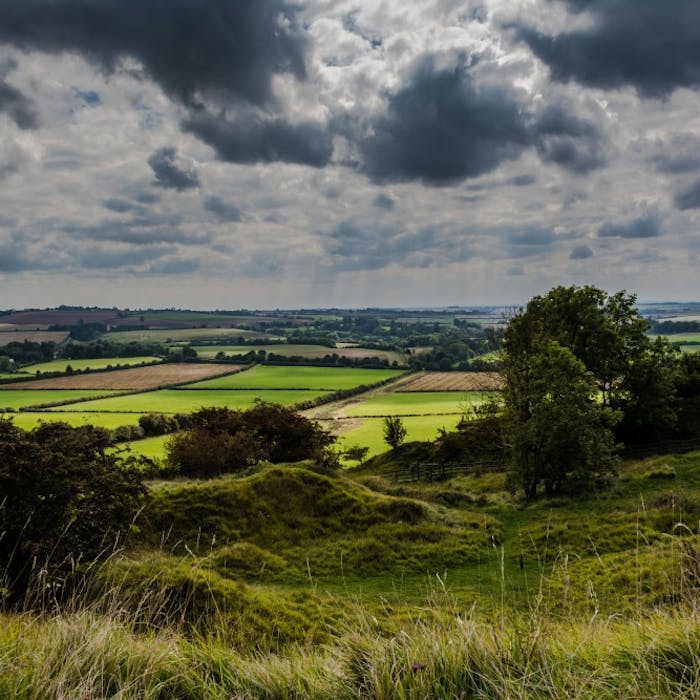
Lincolnshire Wolds AONB
The Lincolnshire Wolds are a delightful area of tranquil countryside of rolling hills and hidden valleys, gentle streams and nestling villages. The Wolds is the highest land in eastern England between Kent and Yorkshire.
The wolds are bounded by the towns of Caistor, Market Rasen, and Horncastle on the west and Louth to the east. They lie in the elevated north-eastern quarter of the county of Lincolnshire, mid-way between Lincoln and the North Sea coast, surrounded by the relatively flat fens, coastal marsh and the Lincoln Clay Vale.
There are fine views to the Pennines in the west, and of the coast and out to sea to the east.
Most of the Lincolnshire Wolds was designated as an Area of Outstanding Natural Beauty in 1973 following considerable local campaigning, under the AONB legislation enacted in 1949. This designation means the landscape is some of Britain's finest countryside. It is a living, working landscape, with woodland, grassland and abandoned chalk pits providing important habitats for rare flowers and wildlife.
The AONB comprises an area of 558 km² (216 miles²), while the wider Lincolnshire Wolds Character/Natural Area incorporates the two neighbouring areas of the 'Spilsby Crescent' to the south and the remaining chalk uplands to the north.
The prominent north west scarp is a dramatic feature of the Wolds, affording views across the Lincolnshire clay vales. The slopes provide a steep and hummocky appearance with attractive spring-line villages at the foot of the scarp. The area is rich in wildlife with rough pasture, scrub and woodland dominant within the valleys.
The chalk wolds is a large open plateau of rolling hills and secluded valleys. The area has the highest concentration of deserted and shrunken medieval villages within the AONB.
The ridges and valleys of the south-west wolds landscape is enormously complex with prominent chalk ridges bisected by deep combes and wide river valleys. The area is one of the most attractive within the Wolds with a patchwork of pastoral and arable fields, woodland, hedgerows, country estates and parkland, and attractive rivers and streams.
The gentle ridge of the south-east claylands dips gently west before merging with the flat marshlands beyond the AONB. This is the most heavily wooded part of the Wolds where large blocks of woodland are interspersed with cultivated fields. The area has an isolated and remote feel with ridge-top salters' roads, spring-line villages and ancient archaeological features.
Further reading
Links to external websites are not maintained by Bite Sized Britain. They are provided to give users access to additional information. Bite Sized Britain is not responsible for the content of these external websites.
